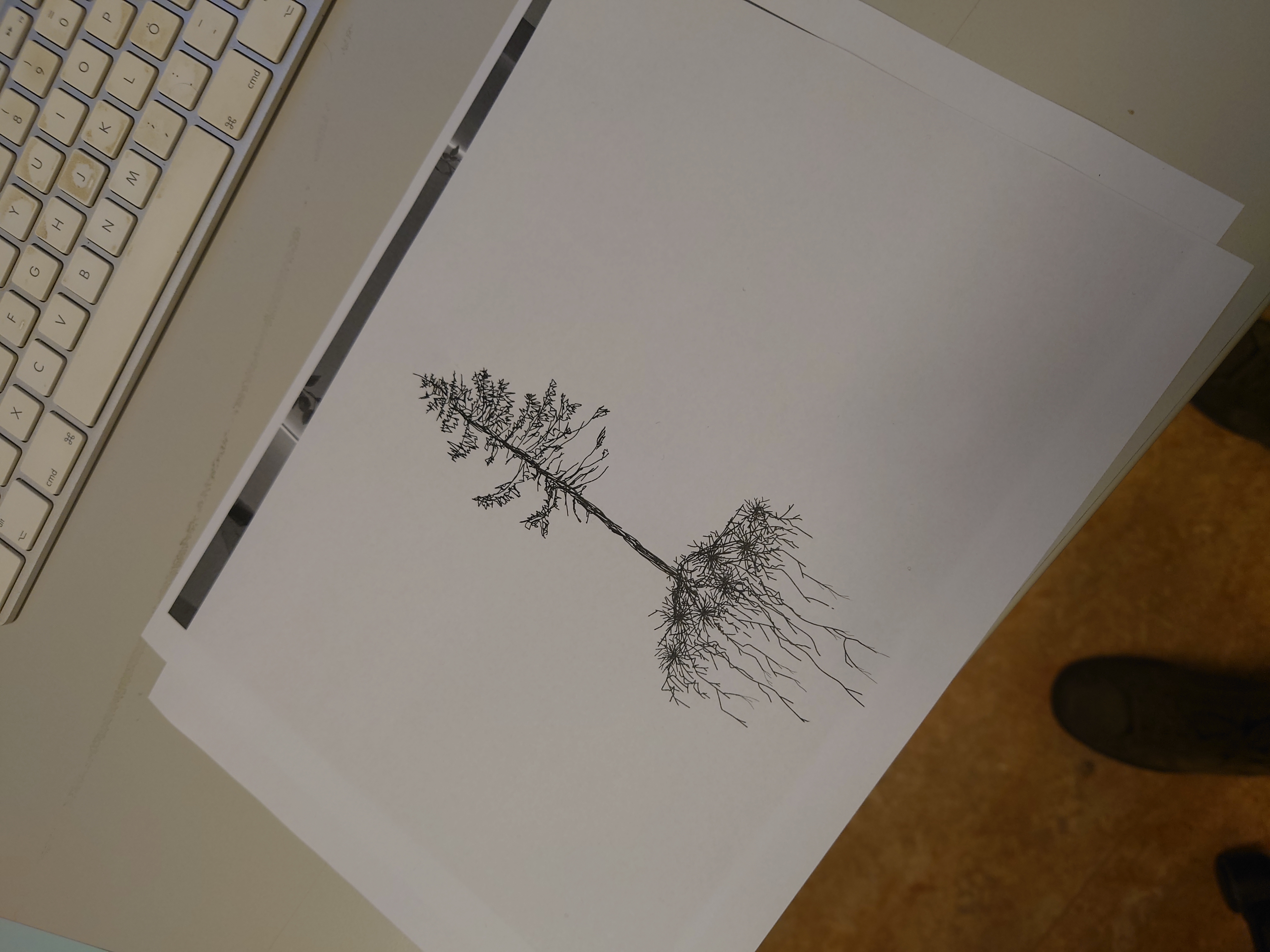221122 -
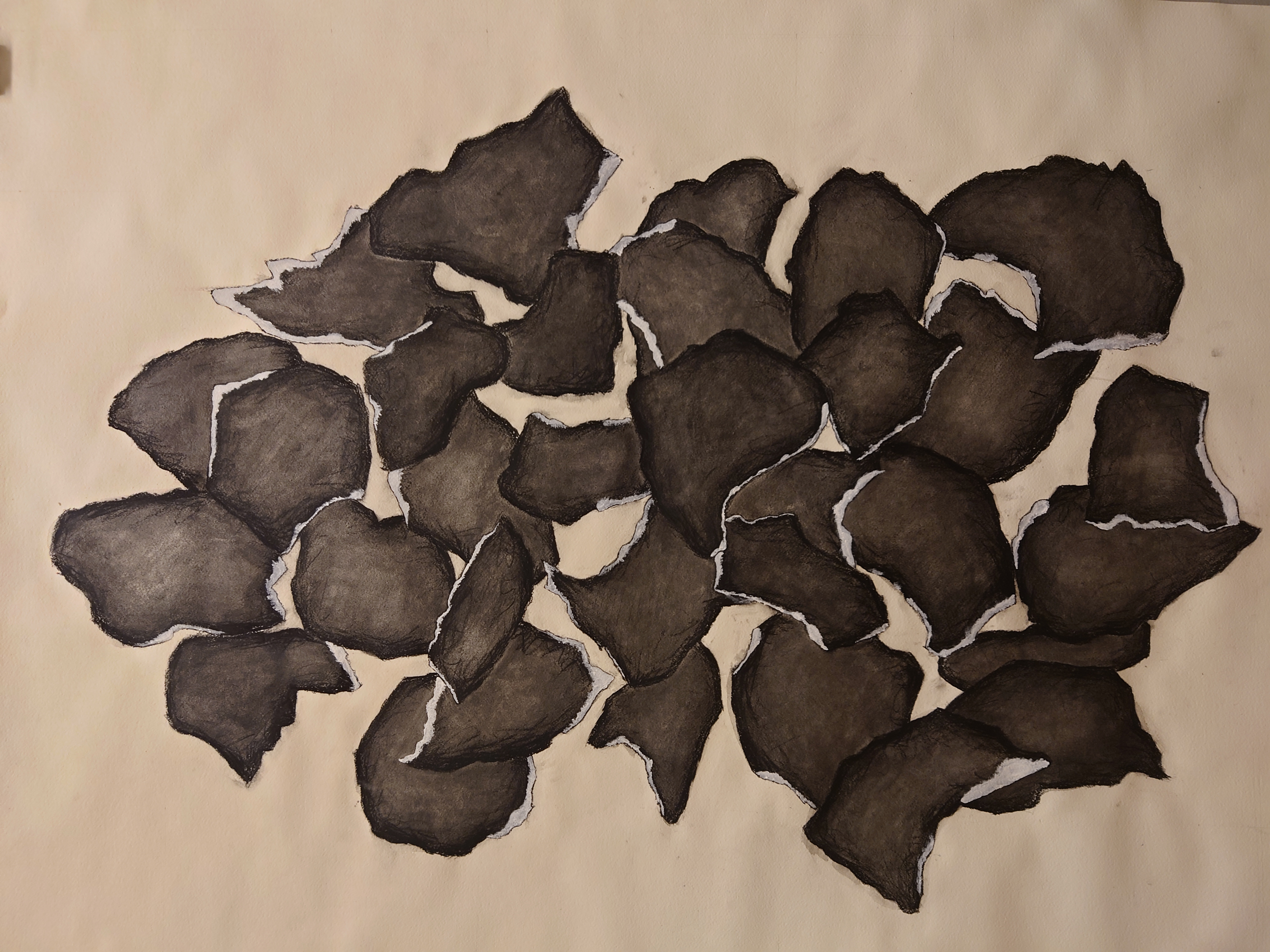
Have finished painting rips into the pieces, don't like it really
because it feels to controlled and precise! Also took a picture and
tried using the drawing as a trigger for the first time, it tracks
well. Something interesting with changing the opacity of the pieces
in the computer and having them pulsate in the AR overlay is that it
reveals new areas of other pieces that were earlier covered. I feel
I need to go back to what my thoughts were when starting out this
process. Deconstruct again.
151122 -
Have focused on the pieces and the ripping of the pieces. Thinking
of going in with white acryllics as shown in the second image.
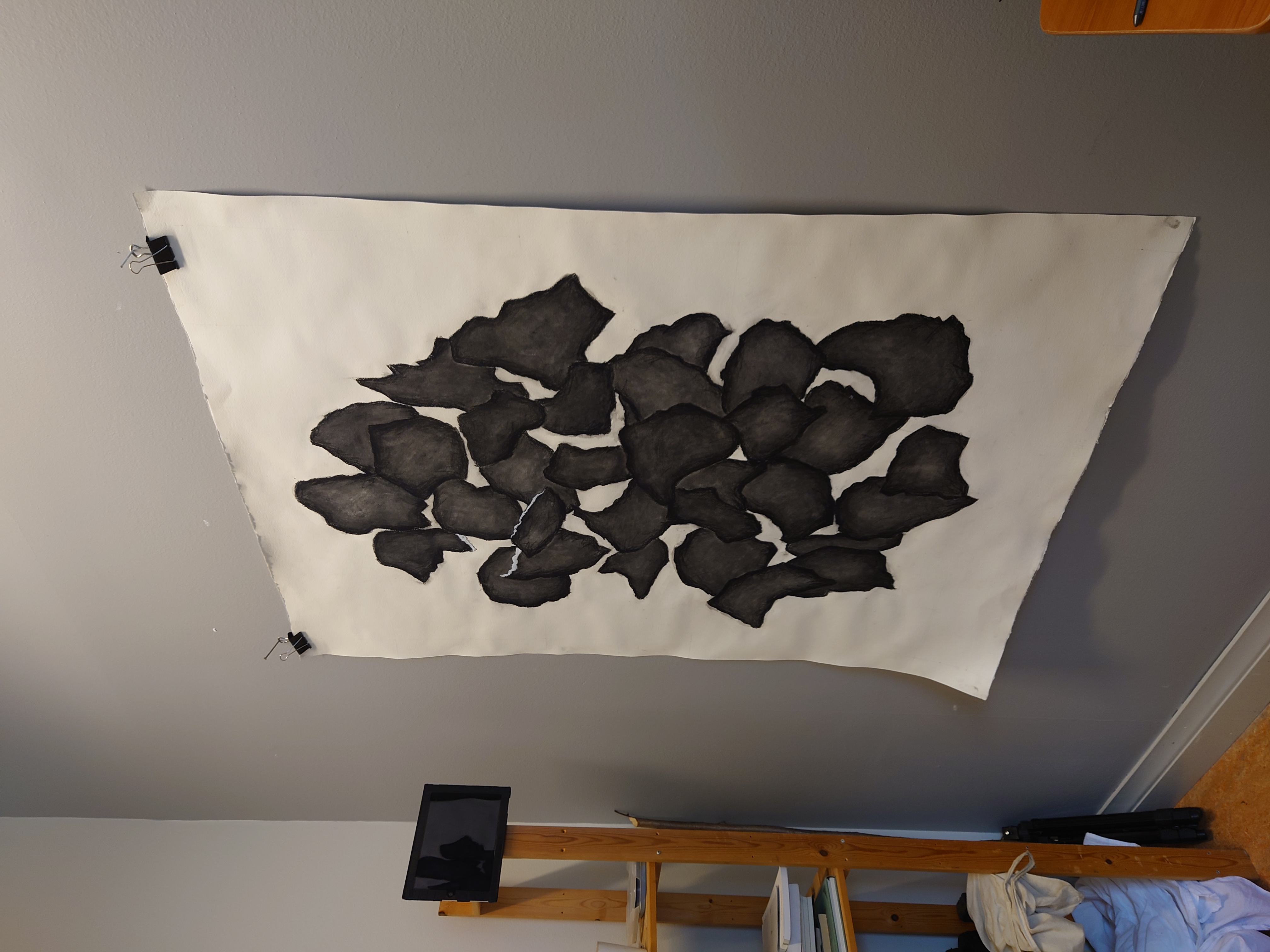
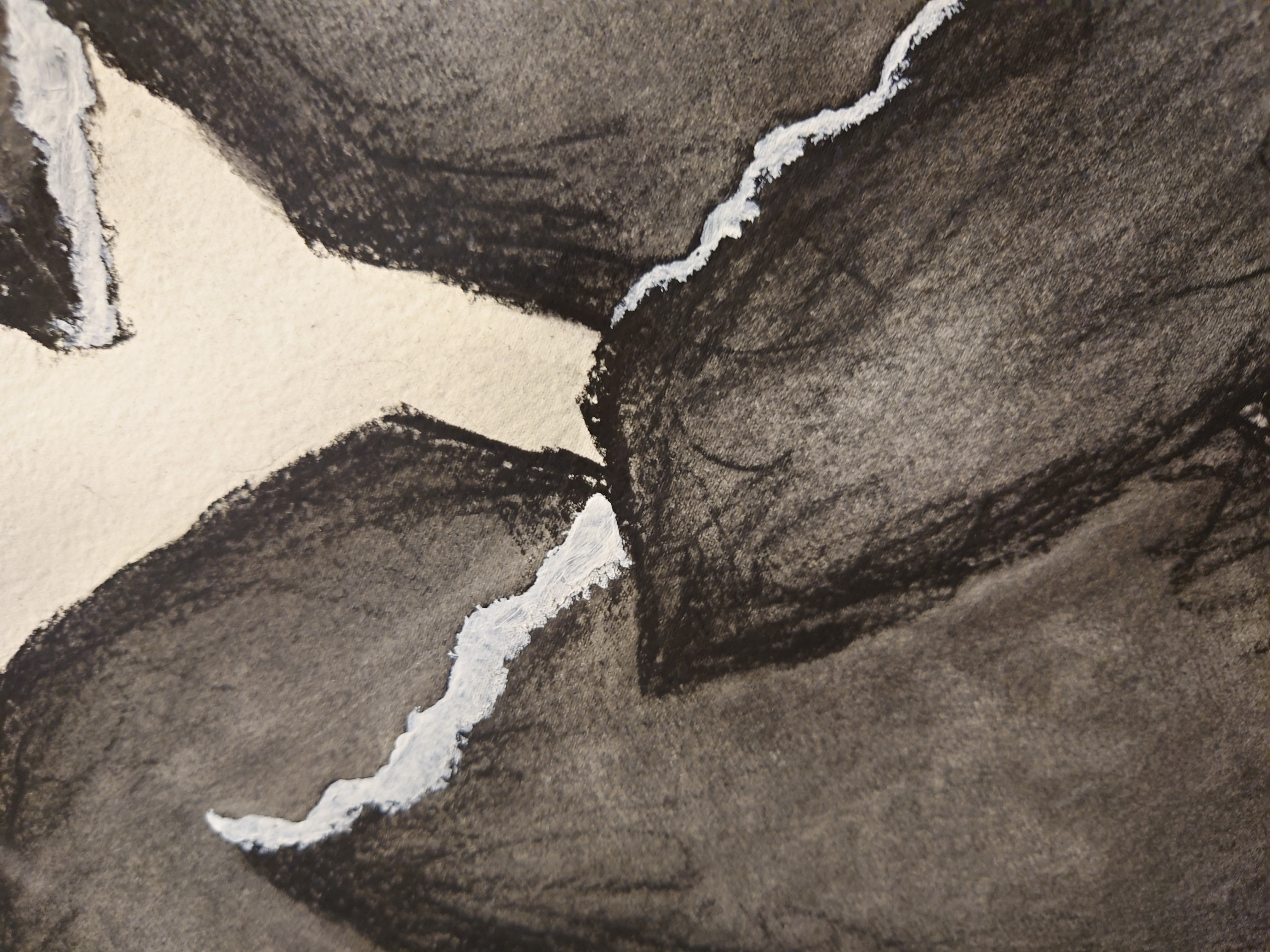
061122 -
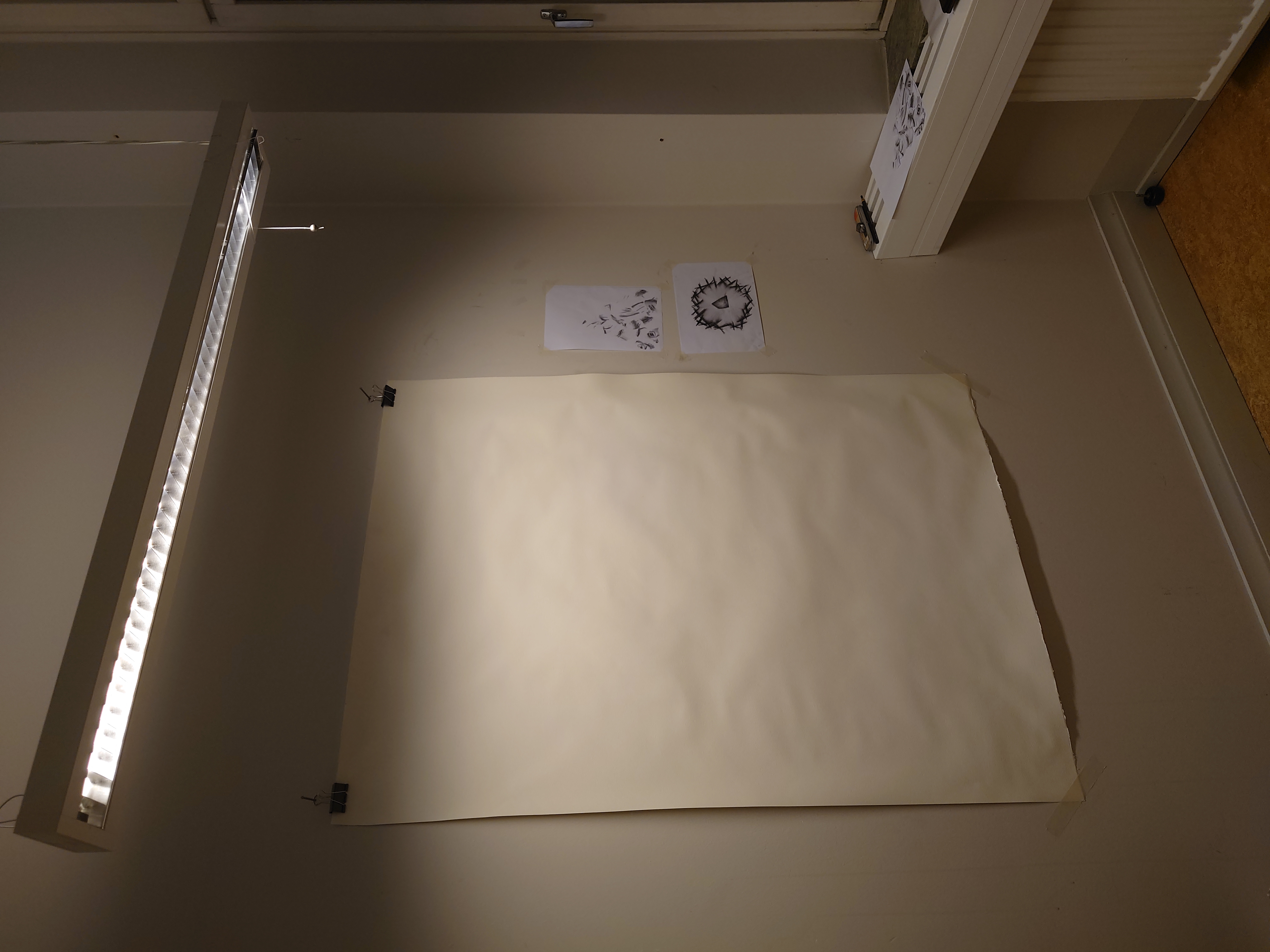

“And so this thing we call art exists in order to restore the
sensation of life, in order to make us feel things, in order to make
a stone stony. The goal of art is to create the sensation of seeing,
and not merely recognizing, things; the device of art is the
“enstrangement” of things and the complication of the form, which
increases the duration and complexity of perception, as the process
of perception is, in art, an end in itself and must be prolonged.
Art is the means to live through the making of a thing; what has
been made does not matter in art.” - Victor Shklovsky
My first steps in
investigating the role of a / positioning myself as a / forming a
relationship with being a
digital artist.
I'm not strange enough, I still see myself
041122 -
Now I have done this. Where do I go from here?
031122 - The last two days I have looked at some artworks created
through Artivive. The application have their own plattform for
featuring and selling art. Some things that I have thought about:
- Found two artists whose work I liked. Much of the artworks did not
revolve in any exiting way of using AR on a digital drawing, mainly
the AR moment consisted of the whole drawing being replaced and then
manipulated. The two artist I liked was
Vinya Cameron
for the implementation of semitransparent layers and
Eliska P for
the discrete but elegant style.
- In my own project I have decided that the AR overlay can only use
existing shapes from the drawing. See the test. I feel the
relationship between the two layers are more present in doing
this.
- Things I'd like to test / explore: Depth perception --> utilizing
the possibility to move the camera in 6DOF (6 degrees of freedom),
enticing the audience to move with their device around the drawing.

I have also started roaming the internet for literature
| name | title | year |
|---|---|---|
| Melai, Anastasiia | “The Immersivity of Art in the Digital Age. Augmented Reality as a New Form of Art Exhibiting” | 2019 |
| Shklovsky, Viktor | “Art, as Device” | 2016 |
| Benjamin, Walter | “The Work of Art in the Age of Mechanical Reproduction” | 1969 |
I found this section by Melai quoting Shklovsky interesting: "Other example of treating the distance was introduced in 1916 by the Russian Formalist literary critic Victor Shklovsky in his essay “Art as Device” . He claims, that as soon as one sees the things or actions as 12 usual, they become automatised. He exemplifies it with speaking the foreign language for the first time and for 10 000th time. This automatisation processis reflected by the way one speaks, shortening the phrases and the words. The ultimate stage of it is the “algebraization” of the speech and the thinking process, where the symbols replace the objects. He writes: “This is how life is disappearing, imputing into nothingness. Automatisation eats away the things, the dress, the furniture, the wife and the fear of war.” And for 13 Shklovsky, the art exists in order to give back this feeling of life, to make feel the things, “to make the stone stony”. Art shows thing as vision, but not as recognisable. Thus, he introduces the term “ostranenie”, which can be translated as “making strange”, or “defamiliarization”, which is making the process of cognition harder and thus longer, as this process is end of art in itself. Shklovsky writes “art is the way to live through the doing, while the done is not important in the art”.
011122 - During the course I am going to examine the relationship
between the physical drawing and an animated virtual layer connected
and triggered by the physical drawing. I am interested in the
process of how the two layers of the artwork will (not?) be in
dialogue with each other and how the methodology of working with AR
(augmented reality) will shape the creative process.
I'm planning to have certain parts of the drawing triggering the AR
overlay and other parts not overlaid with a virtual layer. The
division between these two areas of the drawing could be a way to
raise questions about
There are also certain requirements that make a drawing more
suitable for tracking (such as contrast and details) and I think it
could be interesting to position myself in relation with these
aspects, both actively letting them shape the creative process but
also questioning them and their impact in my artistic practice.
More practically:
I will use the application Artivive for the integration of AR on the
drawing. You can see a showcase of the application and its features
here:
Tutorial: How To Create Art In Augmented Reality With Bridge By
Artivive
This is where I take off. I am comfortable with letting the method
shape the creative process while diving into the work.
Todays testing:
